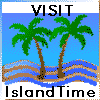Although Sand Key is not touted as a
shelling beach in tourist brochures, a
persistent seeker will eventually find
almost every type of shell here
native to this coast.
For many lovers of the
seashore, the only way
to stroll on a beach is to
walk stooped over carrying a
plastic grocery bag. These are
seashell hunters, eyes peeled
on the shore in search of beautiful bounty from the sea.
Contrary to what skeptics
think, the beaches of Sand Key
are rich in shells of every type,
and a persistent shell seeker
eventually will find nearly all
that are native to Florida's
west coast.
Shells have fascinated
people since ancient times.
The history of mollusks (the
soft-bodied animals that live
inside shells) is intertwined
with the history of mankind.
Early ancestors used shells as
utensils, tools and ornaments.
Shells were also used as money
and as objects of barter.
Have you ever wondered
how the color purple became
a symbol of royalty and richness -- the color used by
kings and church hierarchy
throughout history? In the
days before Kit Fabric Dye,
dyeing wasn't easy. Ancient
Romans discovered that a
royal purple dye could be extracted from murex seashells.
Thousands of shells were
needed to extract just a tiny
amount of the dye by drying
and boiling the soft bodies of
the murex animals. Thus only
the rich and famous could afford to wear this color. Antony
and Cleopatra must have been
loaded. It is said they had all
the sails of their ships dyed
purple for the battle of Actium.
So how does a modern-day
shell seeker find success on
Sand Key? The secret is to
search at the right time. Because of the littoral and seasonal drift of currents, the fall
seems to be the best time of the
year, better yet immediately
following a storm. The best
time of the day is during the
lowest of low tides. Bivalve
shells are left stranded on the
beach making for easy picking,
if you can beat the birds to
them. The harder-to-spot univalves can be found using a
glass-bottom pail atop the water surface. Coquinas and
olives are yours for the scooping with a kitchen colander.
Although I think Sand Key
boasts an unadvertised special
on shelling, they say there's a
certain spot near the Florida / Georgia border that is even better. Tourists heading home after a vacation spent collecting
live shells often get only as far as this spot before the uncleaned shells
begin to heat up and smell. As if on cue, the tourists stop and add
their collection to a dumpster already overflowing with bags of shells
from other tourists, making this the richest accumulation of seashells
in the state.
The point is, it's important to clean live shells. The easiest method
is to put shells in a pan of warm water and slowly bring it to boil.
This prevents sudden temperature changes from cracking the glossy
shells of olives and cowries. The muscle relaxes and the mollusk can
be scraped or pulled out with tweezers. For the no-fuss, no-muss
method, you can let Nature do the job. Set your shells out under a tree
for a few days and the ants will happily forego a picnic in favor of
munching on your mollusks.. To bring out a shell's color, coat your
specimens with 2/3 baby oil and 1/3 lighter fluid.
It's easier to find a fighting conch than it is to find a great book on
Florida shells, but I've done both. Check out Florida's Fabulous
Seashells by Winston Williams for a well-written illustrated tome
about shells along the Florida seashore.
| 

